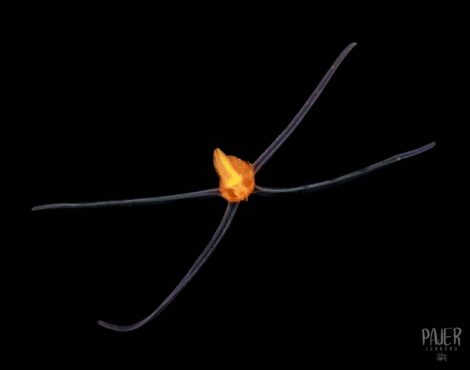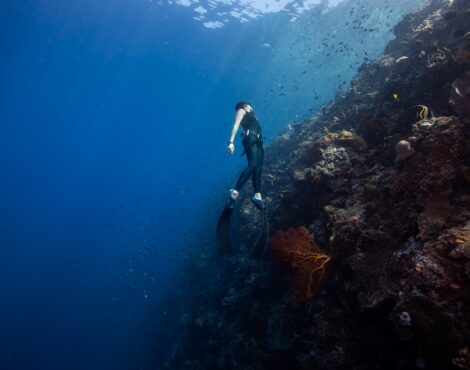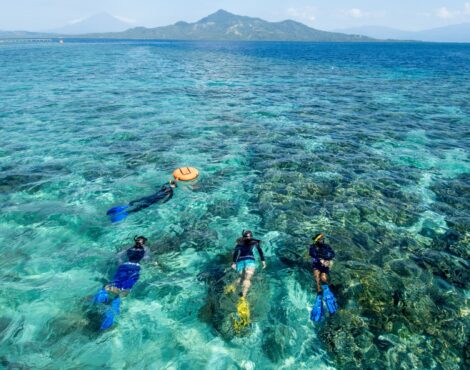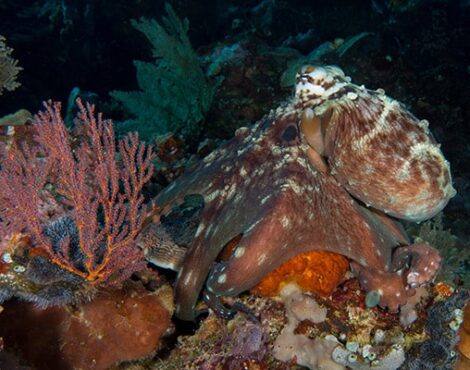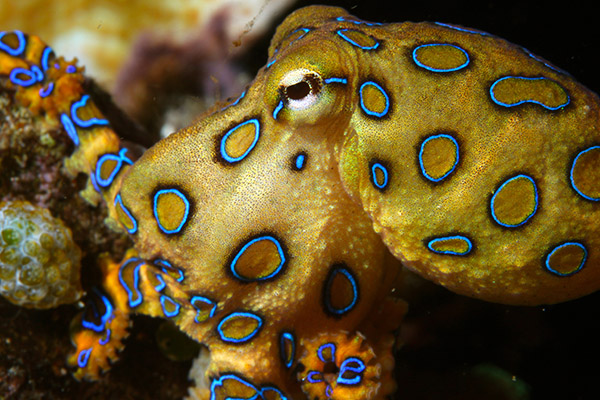
Many guests arrive to Siladen Resort & Spa with their heart set on seeing one specific critter or another. For many guests, that listed is topped by one of the most deadly animals on planet â the blue-ringed octopus. Native to the Indo-Pacific, the blue-ringed octopus can be found in relatively shallow waters, preferring rubble or sandy bottoms with lots of place to hide.
All known species of octopus are venomous, but the blue-ringed octopus is a cut above the rest. One bite from one of these little octopus packs enough venom to kill as many as 26 humans in only a few minutes. This ranks it as one of the worldâs deadliest animals, but luckily for us, they are extremely docile and will flee at the first sign of real danger. Their venomous bite injects its prey with a neurotoxin called tetrodotoxin, which also happens to be the deadly poison found in pufferfish. The octopus itself does not produce this toxin, instead, it is produced by a symbiotic bacteria living in the blue-ringed octopuses salivary glands.
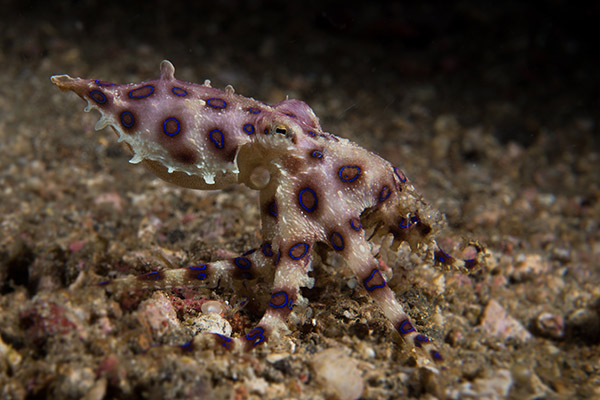
When many divers and snorkelers see their first blue-ringed octopus, their initial reaction is usually along the lines of âWas that a baby one, or are they always that small?â They are a very small species, usually being between 12 to 20cm. Although generally shy, they will move around the open reef while hunting, deterring any potential predators by their distinctive bright blue rings on a gold-yellow body. You can easily tell when a blue-ringed octopus is stressed, as they will begin flashing their blue rings like the flashing lights on a police car.
The diet of blue-ringed octopuses consists mainly of small crabs and shrimp, although they will feed on small fish if they can catch them. Like other cephalopods, octopus have hard beaks instead of mouths. To catch their food, they will pounce of their prey, pull it towards itself with its arms and use its hard drill like beak to pierce a hole in any hard shell. Once it is through any exoskeleton, it will then releases its venomous saliva to completely paralyse its prey.
Blue-ringed octopuses mating ritual begins when a male begins caressing a female with his hectocotylus â a specialised arm modified for mating. He will then grab her, trying to obscure her vision, and then transfer sperm to her by inserting his hectocotylus into her mantle cavity. Males are very aggressive reproducers, and will attempt to mate with any member of their own species, regardless of size or sex. Once the female blue-ringed octopus has produced eggs, she will lay them and incubate them under her arms for around six months. During this time, she will not eat, and once the eggs hatch, she will die. The offspring will reach full sexual maturity and begin mating within one year of hatching.
Although blue-ringed octopus are quite common, their miniature size, incredible camouflage âwhen not flashing- and general shyness means they are very difficult to find. Here in Bunaken Marine Park, you have equal chances to spot them on the deep walls surrounding Bunaken as you on the sandy slopes of the North Sulawesi mainland. They are active during both day and night, but they tend to be more commonly spotted on night dives, as they more actively move around the reef and hunt during the night.


